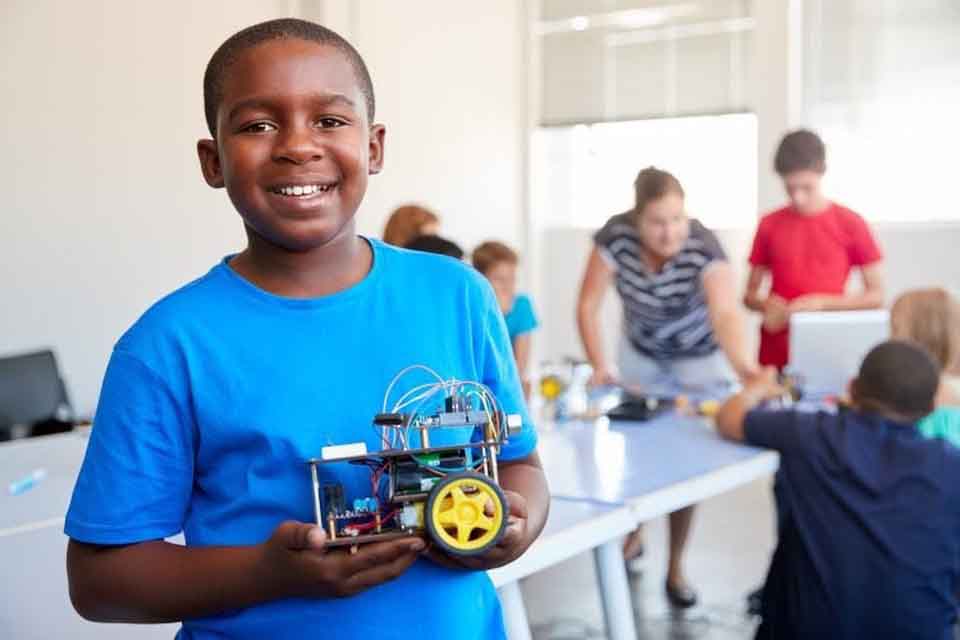
STEM Education for Early Learners
In today’s rapidly evolving world, the foundation of success lies in a strong grasp of science, technology, engineering, and mathematics—collectively known as STEM. Parents and educators alike are recognizing the importance of introducing these concepts to children from an early age. But why should we invest time and resources into STEM education for young learners? The answer is simple: nurturing curiosity and critical thinking skills at a young age can open doors to endless possibilities in their future.
Imagine kids tinkering with gadgets or experimenting with building blocks while learning fundamental principles of physics. Picture them asking questions about how things work and seeking solutions through innovative thinking. This hands-on approach not only makes learning engaging but also equips children with essential skills they will need in our increasingly tech-driven society.
As we explore the significance of STEM education for early learners, we’ll uncover its many benefits, practical ways to implement it in classrooms or homes, successful programs making a difference, challenges faced along the way, and why this investment is crucial for shaping bright futures. Get ready to dive into the fascinating world where creativity meets logic!

The Importance of STEM Education for Early Learners
STEM education for early learners is vital in fostering a strong intellectual foundation. Introducing these subjects at a young age not only ignites curiosity but also nurtures critical thinking skills.
Children are naturally inquisitive, and STEM encourages them to explore the world around them. This exploration leads to problem-solving abilities that can be applied throughout their lives.
Early exposure helps demystify complex concepts in science and mathematics, making them accessible and enjoyable. Engaging activities help students understand how things function while promoting creativity and innovation.
Furthermore, integrating technology into learning sets the stage for embracing digital tools essential in today’s workforce. As children interact with various materials and ideas, they develop teamwork skills necessary for collaboration later on.
Investing in STEM education from an early age cultivates future innovators who will drive progress across multiple fields.
What is STEM?
STEM stands for Science, Technology, Engineering, and Mathematics. It’s an educational framework that emphasizes these four disciplines as interconnected rather than separate subjects.
Science encourages curiosity about the world. It teaches children how to observe, ask questions, and conduct experiments.
Technology is everywhere in our lives today. Introducing young learners to technology helps them understand its role in society while nurturing their digital skills.
Engineering fosters problem-solving abilities through design challenges and hands-on projects. Children learn to build solutions based on real-world issues.
Mathematics provides the foundation for logical reasoning and critical thinking skills essential across all fields of study. These concepts form a cohesive approach that prepares students not just for academic success but also equips them with essential life skills.

Benefits of Introducing STEM to Children at a Young Age
Introducing STEM to children early in their development opens a world of possibilities. It nurtures curiosity and encourages exploration, which are essential components of learning.
When young learners engage with science, technology, engineering, and mathematics, they enhance critical thinking skills. These subjects promote problem-solving abilities that can be applied across various disciplines.
Hands-on activities make learning fun and interactive. Kids learn best by doing—building structures or conducting simple experiments keeps them engaged while sparking creativity.
Moreover, early exposure to STEM fosters collaboration among peers. Working on group projects teaches communication skills and the importance of teamwork.
These experiences lay a solid foundation for future academic success. Early learners who understand fundamental concepts will find advanced topics less daunting as they progress through their education journey.
How to Incorporate STEM into Early Childhood Education
Incorporating STEM into early childhood education can be both fun and impactful. Start with hands-on activities that engage young minds. Simple experiments, like mixing baking soda and vinegar, teach scientific principles while sparking curiosity.
Utilize everyday objects for engineering challenges. Building structures with blocks or recycled materials allows children to explore design and construction concepts creatively.
Integrate technology in a playful way. Introduce coding games tailored for young learners, helping them grasp basic programming logic through engaging apps or interactive toys.
Foster an environment of inquiry by encouraging questions. Prompt discussions about what they observe in nature or during projects.
Include storytelling that weaves together science and math themes. Books featuring space exploration or animal habitats can ignite interest in these subjects while making learning enjoyable.
Successful Examples and Case Studies of STEM Programs for Young Children
Across the globe, several innovative programs are showcasing the effectiveness of STEM education for early learners. One standout example is the “Little Engineers” initiative in Singapore. This program introduces preschoolers to basic engineering concepts through hands-on projects and playful activities, fostering creativity and problem-solving skills.
In Chicago, “Science Play” engages young children with interactive science kits tailored to their developmental levels. Kids can explore simple experiments that spark curiosity about the natural world while developing critical thinking abilities.
Another remarkable case is in Finland, where educators utilize outdoor classrooms to teach math and science concepts through nature exploration. Children learn by observing ecosystems firsthand, merging play with academic learning seamlessly.
These examples reveal how diverse approaches can make STEM accessible and enjoyable for young minds. Each program highlights unique strategies that not only educate but also inspire a lifelong love for learning in children.
Challenges and Criticisms of Early STEM Education
Early STEM education faces several challenges. One significant concern is the lack of trained educators. Not all teachers possess a robust background in science, technology, engineering, and mathematics. This gap can hinder effective teaching.
Another challenge is resource availability. Many early childhood programs struggle to access quality materials and tools necessary for hands-on learning experiences. Limited budgets often restrict creative approaches.
Additionally, some critics argue that introducing complex concepts too early could overwhelm young learners. They believe play-based learning should remain at the forefront during these formative years.
There’s also a growing debate about whether standardized assessments are suitable for young children engaged in STEM activities. These tests might not accurately reflect their skills or interests.
Equity remains an issue within STEM education initiatives. Access can vary significantly across different communities, leaving some children at a disadvantage from the start.

Conclusion: Why Investing in STEM Education for Early Learners is Crucial for the Future
Investing in STEM education for early learners is not just a trend; it’s an essential strategy for cultivating the next generation of thinkers and innovators. As technology continues to evolve, so does the need for skills that promote critical thinking, creativity, and problem-solving.
Early exposure to science, technology, engineering, and mathematics lays a strong foundation. Children engage with concepts that are vital in our rapidly changing world. This investment shapes their ability to adapt, collaborate, and thrive in various fields.
Moreover, introducing STEM at an early age fosters curiosity. When children ask questions and seek solutions through hands-on activities, they develop a love for learning that lasts a lifetime. They learn to experiment without fear of failure—an invaluable lesson.
As communities prioritize this type of education within schools and home settings alike, they equip young learners with tools needed for future success. The implications extend beyond individual achievement; as more students excel in STEM areas, society benefits from increased innovation and economic growth.
Embracing STEM education signals commitment—not only to today’s youth but also to tomorrow’s possibilities. By nurturing bright minds today with rich educational experiences centered around STEM principles ensures we pave the way toward a brighter future filled with potential breakthroughs across industries.



Leave a Reply